This information is intended as general advice only and does not replace individual medical guidance. Consult your medical professional to determine the best approach for your specific needs.
Introduction
Strapping tape can be a useful and versatile tool in managing hypermobility. When applied correctly, it may help reduce pain and improve function by:
- Supporting and aligning unstable or injured joints
- Enhancing proprioception and muscle activation
- Modulating sensory input to reduce pain
- Providing a lightweight, water-tolerant alternative to bracing
Learn more about hypermobility, HSD & EDS
However, taping can be more challenging in people with Hypermobility Spectrum Disorder (HSD) or hypermobile Ehlers-Danlos Syndrome (hEDS). At Not Just Bendy, we consider common concerns such as:
- Skin fragility
- Adhesive allergies or sensitivities
- Sensory challenges
- Related conditions like mast cell activation syndrome (MCAS)
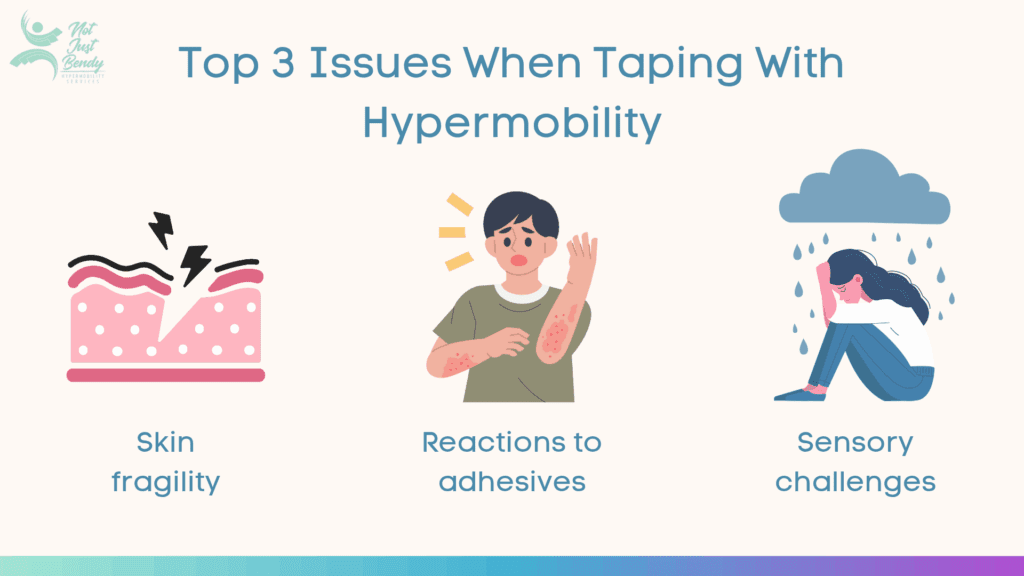
People with red hair, Caucasian European descent or symptomatic hypermobility may be more prone to tape reactions, which can present as redness, rash, blistering, or skin tearing on removal. Frustratingly, those who benefit most from taping are often the most sensitive to it.
Finding the right tape can take some trial and error, but we have done the hard work for you and have trialled many different brands and types over the years and have found some tapes to be better tolerated by people with sensitive skin.
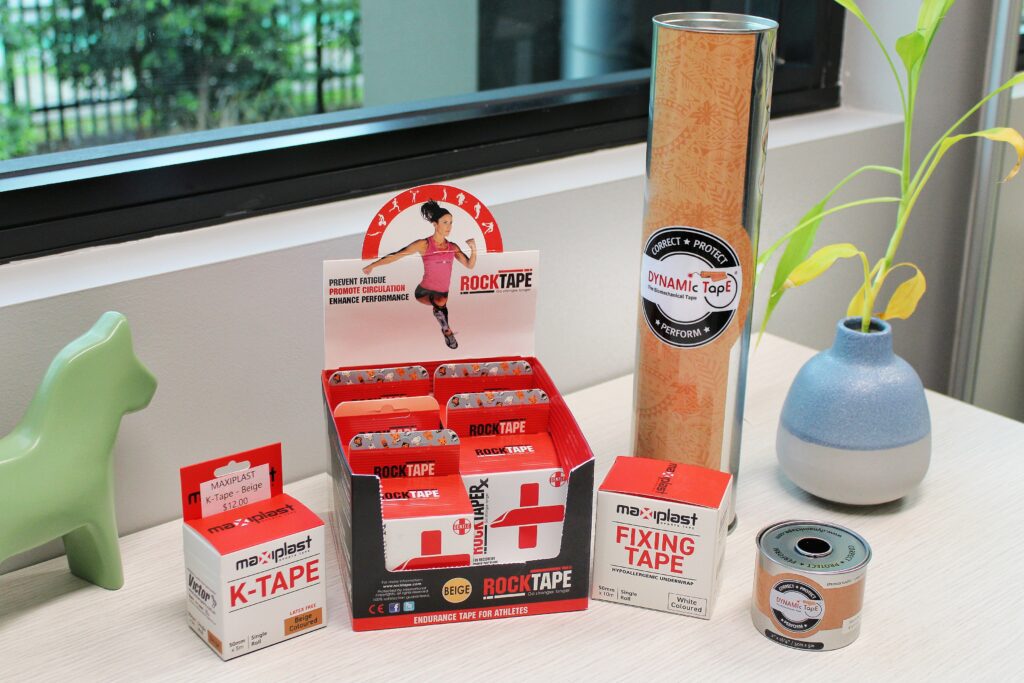
Taping Options
There are three main types of tape commonly used to support people with hypermobility. Each offers different benefits depending on the area being taped, the level of support required, and individual skin tolerance.
| You may need to trial a few different brands to find one that suits your skin and comfort levels. We’ve even noticed that different colours within the same brand can feel slightly different. If you have sensitive skin, it’s a good idea to do a patch test first by applying a small piece of tape to the area and monitoring for any reaction over 24 hours. |
Rigid tape
Rigid tape is a more traditional method of taping. The tape has no stretch and provides a strong support. As there is no stretch, it can feel too restrictive of normal movement and may not be well tolerate by those sensitive or fragile skin.
It is more useful for:
- Stabilising acute injuries where the goal is to temporarily limit range of movement in stable ranges i.e., post-ankle sprain.
- Providing strong joint support when stretchy-type tape is not enough.
Protective Base Tapes
These are soft, fabric-based tapes with a gentle adhesive, that can be used for gentle support or often used as a protective layer underneath other tape. While not supportive on their own, they can give proprioceptive input to the muscle/joints and they can help reduce skin irritation and improve tape tolerance, especially when using rigid or elastic tapes for extended periods. They are breathable, flexible, and can be cut to size.
This type of tape is most useful for:
- Protecting fragile or sensitive skin before applying rigid or elastic tape
- Reducing the risk of blistering or allergic reactions
- Helping other tapes adhere more comfortably to hairy or textured skin
| ** Not Just Bendy recommendation: Maxiplast Fixing Tape or Fixomull |
Kinesiology or Elastic Tape
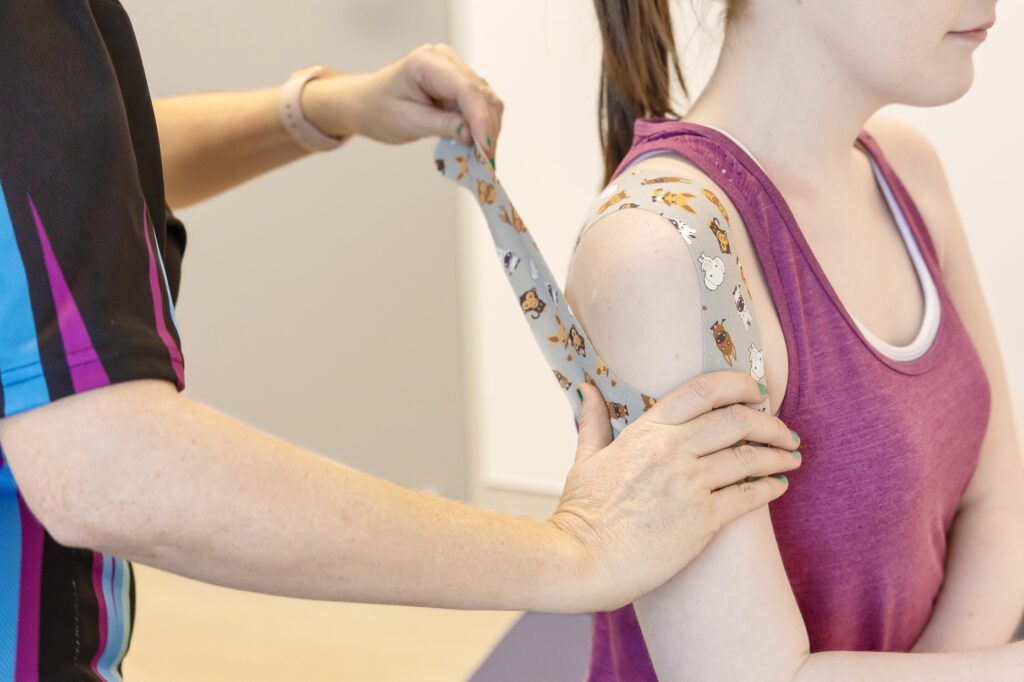
2-Way Stretch:
Kinesiology tape has 2-way stretch (along its length). It is designed to move with the body while offering mild-to-moderate support. This type of tape is breathable, generally well tolerated for longer wear, and is often more suitable for those with sensitive or fragile skin. There are many brands available on the market, including RockTape and K-Tape (e.g. Maxiplast K-Tape).
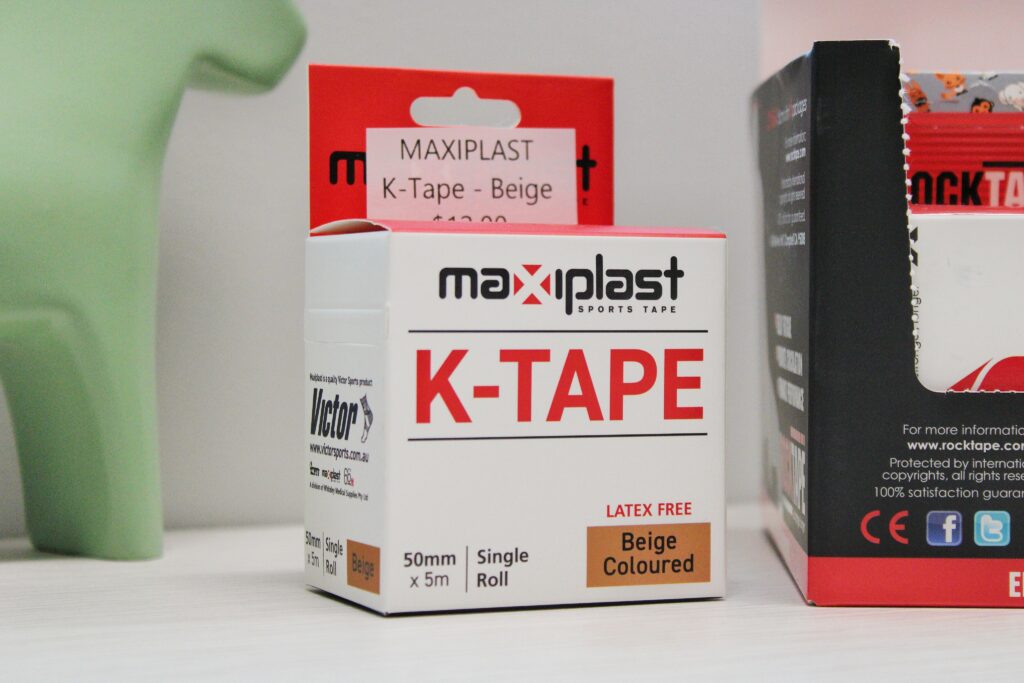
It is more useful for:
- Mild-to-moderate support of the joints while allowing movement
- Improving proprioception (awareness of where joints are in space)
- Encouraging muscle activation or inhibition depending on application method
- Reducing swelling (via specific techniques)
| ** Not Just Bendy Recommendation: RockTape Sensitive – comes in skin colour and cute baby animal (including zebra) prints |
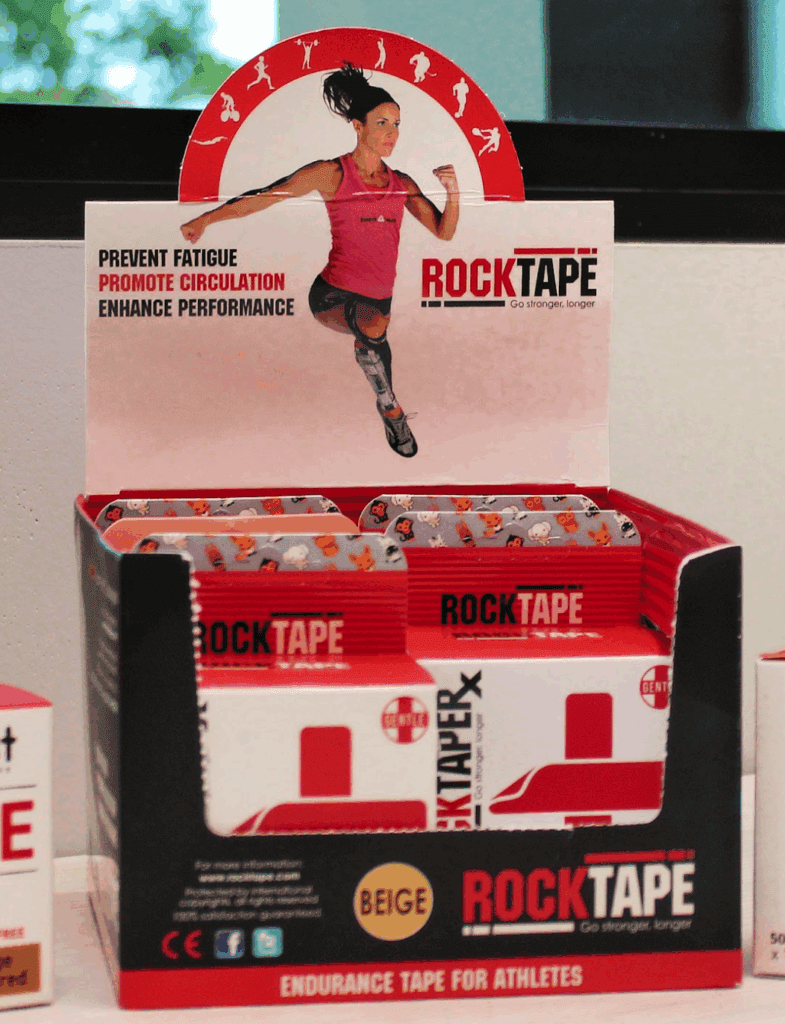
4-way Stretch:
Some elastic tapes offer 4-way stretch — meaning they stretch both lengthwise and width-wise — for more dynamic movement support. These tapes are typically thicker and more elastic, offering a higher level of support while still allowing movement. Their recoil properties help to absorb and redistribute load across muscles and joints, which can be particularly helpful during more active tasks or in larger muscle groups.
They are more useful for:
• Providing joint and proprioceptive support that sits between rigid and kinesiology tape
• Reducing swelling (via specific techniques)
• Encouraging muscle activation or inhibition depending on application method — particularly in dynamic or functional movement
| ** Not Just Bendy Recommendation: Dynamic Tape – comes in skin colour and a tattoo pattern (in black or beige) |
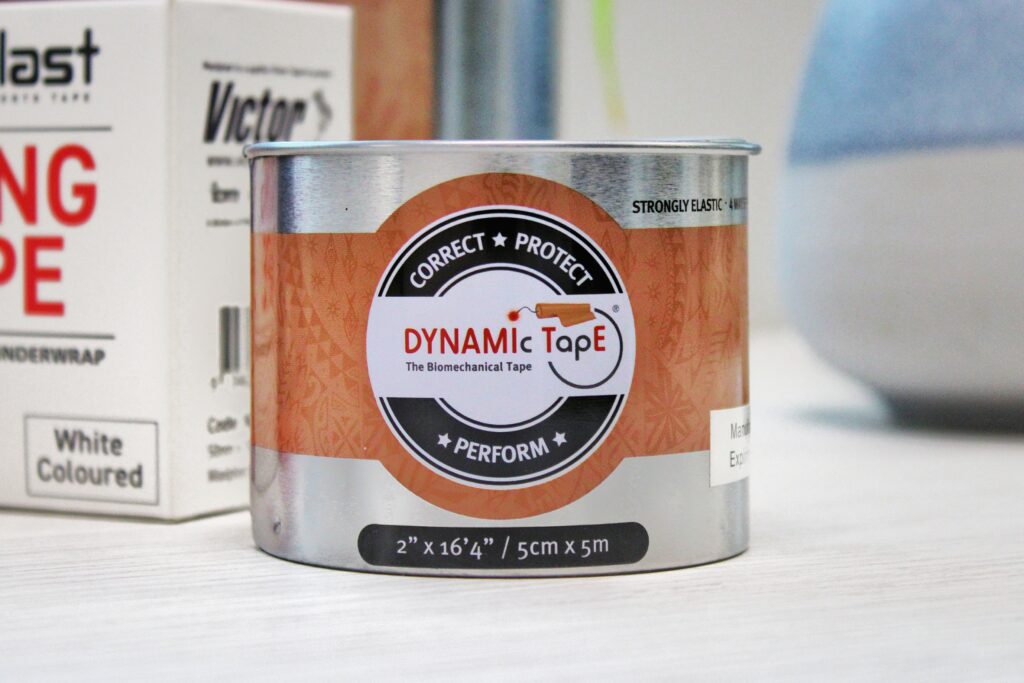
Hypermobility-Specific Taping Tips
When taping, at Not Just Bendy, we understand and take into account that skin fragility, allergies, mast cell activation syndrome and sensory sensitivities can affect how well you tolerate taping. We stock have a variety of brands and types of tape for this reason. Prior to trialling taping, your therapist can patch test various options with you first. Additionally, we can use skin protective spray and under-tapes as well.
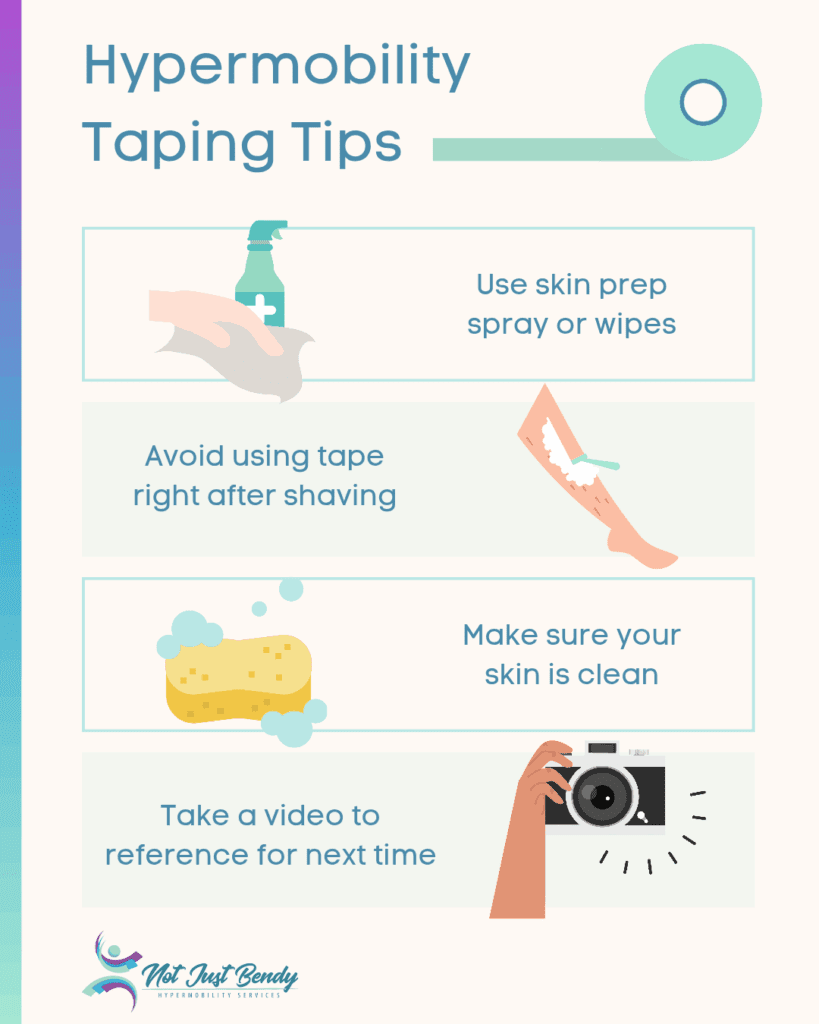
Application Tips
- It is important to apply tape with the body in good joint alignment and posture. Using environmental supports like cushions or bolsters may help you maintain an ideal position while taping. The tape should reinforce this baseline alignment, rather than holding the joint in a strained or compensatory position.
- To improve your independence with managing your condition, your health professional can show you or your support person how to apply the tape. Taking a photo or video on your own device during the session can also be a helpful reference for later.
- If you have sensitive skin, avoid applying tape immediately after shaving. Shaving removes the most superficial layer of skin and increases the risk of irritation or tearing.
- Use SKIN-PREP (Smith & Nephew), available as a spray or in wipes, to create a protective barrier between your skin and the tape. It can help reduce irritation, improve adhesion, and make removal easier.
- Under-tape may be used to reduce direct contact between the skin and the main tape. These tapes are generally better tolerated and easier to remove.
- Note: Under-tape is not ideal with Dynamic Tape, as it reduces the tape’s recoil and load-absorbing function. In some cases, this trade-off may be acceptable if skin protection is a higher priority.
- Tape will not adhere properly to sweaty or oily skin, or if there are any creams, lotions, or powders present. Always clean and dry the skin thoroughly before applying tape.
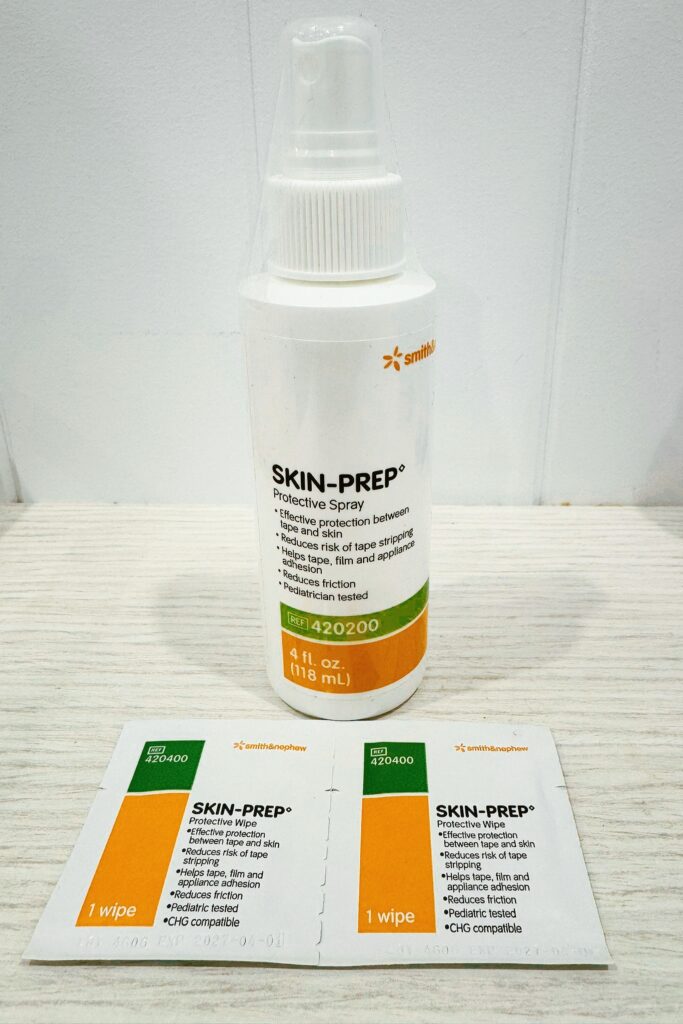
Stretchy Tape Application Tips
- Round the corners of stretchy tapes before applying to reduce the likelihood of tape edges lifting or irritating the skin.
- Avoid stretching the first inch of tape at either end. These anchor zones should be applied with no stretch, or with stretch in the opposite direction, as the edges of the tape are the most likely areas to cause irritation.
- Apply stretchy tapes with light to moderate stretch (25–50%) or as advised by your therapist. Excessive stretch can increase the risk of blistering or skin damage.
- Hold down the anchor (the end of the tape) in the opposite direction of stretch as you apply. This helps prevent skin traction injuries and improves durability.
Whilst Wearing Tape
- Wear time depends on your skin’s tolerance. Aim for no more than three days and remove earlier if uncomfortable.
- If you’re allergy-prone, remove after 48 hours or at the first sign of irritation.
- Allergic reactions can appear as redness, itchiness, blistering, or pain. Remove tape and allow skin to fully heal before reapplying.
- Discomfort may also result from joint position or circulation changes (e.g. throbbing, aching, pressure). If this occurs, remove the tape and speak with your therapist.
- If highly reactive, consider using tape only during activity and removing it afterward.
- If well tolerated, tape can stay on for up to five to seven days (brand dependent).
- Sweat, soap, and water can affect adhesion and increase irritation risk. Dry tape and skin thoroughly after getting wet.
- Tapes designed for water use may be better suited for reactive skin or frequent water exposure.
| Stretchy tape can be a powerful tool for retraining posture and muscle control. If you notice the tape pulling – (such as when you start to slouch) gently correct your posture by moving to reduce the pull of the tape. This helps your muscles learn how to hold your body in a better position without relying on the tape for passive support in the long term. |
Removal of Tape
• Do not rip the tape off like a band-aid. Hold the skin taut and peel it back slowly in small sections to minimise the risk of skin tearing.
• Soften the adhesive first by soaking with olive oil, removing it in a warm shower, or using tape removal wipes. We stock REMOVE wipes by Smith & Nephew, which are gentle and effective.
• Leave at least one day between applications over the same area to allow the skin to recover, as tape removal removes superficial layers.
• If you experience blistering, skin tearing, or a reaction, avoid reapplying tape to the same spot until it has fully healed.
Speak with your therapist before trying again.
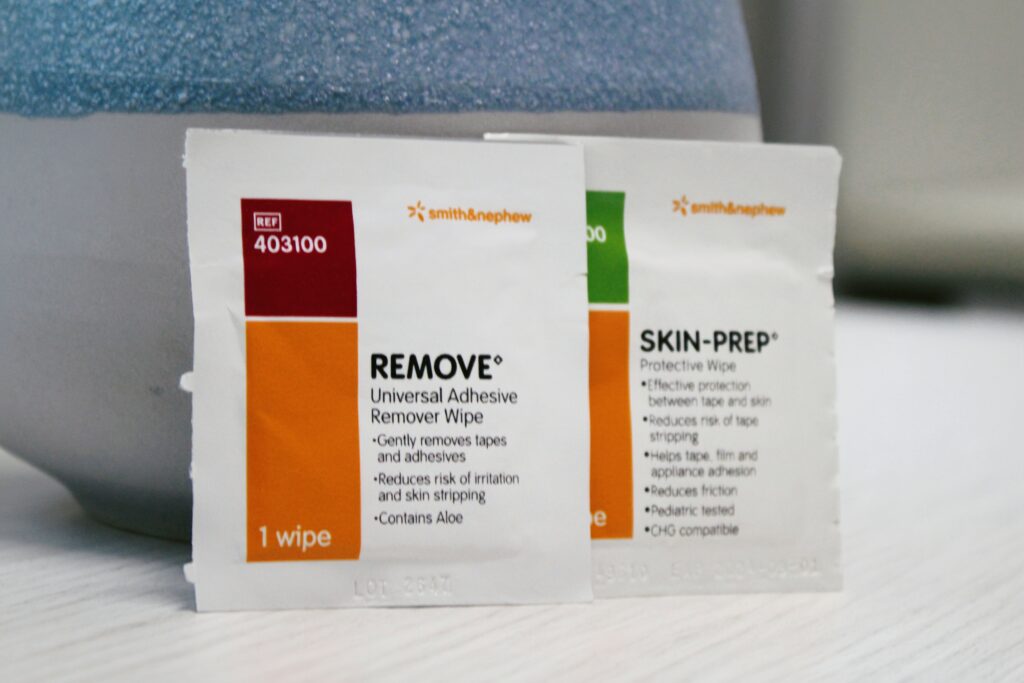
General Safety Precautions
- Start with clean, dry skin
- Remove any sweat, oils, moisturiser, or water to help the tape stick and reduce skin irritation.
- Check for tape suitability
- Don’t apply over wounds, infections, fragile skin, or known skin conditions. Trim body hair if needed to improve adhesion and reduce discomfort.
- Watch for skin reactions
- Blistering, redness, itching, or pain may indicate an allergy or sensitivity. Remove the tape immediately if these occur.
- Use correct taping technique
- Poorly applied tape can restrict movement or strain joints. Always follow professional guidance on how and where to apply it.
- Tape supports, it doesn’t replace rehab
- Taping can aid recovery and reduce strain, but it should complement—not replace—your exercise and rehab program.
Summary
Taping can be a useful tool to support joint stability, improve movement awareness, and reduce pain in people with hypermobility. For the best results, seek guidance from your health professional regarding tape selection, skin preparation, application technique, and how to monitor for any adverse reactions.
Find out more about How We Can Help & the Services We Offer At Not Just Bendy
This article has been compiled by the Not Just Bendy team based on current research and clinical experience in managing hypermobility.
Learn More
You can find more information curated by Not Just Bendy at:
- What Is Hypermobility?
- Mast Cell Activation Disorders
- Postural Orthostatic Tachycardia Syndrome (POTS)
- Exercise Tips for Postural Orthostatic Tachycardia Syndrome (POTS)
- Hypermobile Hips
- Women’s Health Issues In Hypermobility
- Switching on the Lightbulb to see Hypermobility Disorders
- Hypermobility Screening & Prevention
- Exercise Classes for Hypermobility
- Exercise Physiology
- Hypermobility Resources
- Hypermobility Brisbane Physiotherapy
References
- Camerota, F., Galli, M., Cimolin, V., Celletti, C., Castori, M., Albertini, G., & Padua, L. (2014). The effects of neuromuscular taping on gait walking strategy in a patient with joint hypermobility syndrome/Ehlers–Danlos syndrome hypermobility type. Therapeutic Advances in Musculoskeletal Disease, 7(1), 3–10. https://doi.org/10.1177/1759720X14564561
- Dynamic Tape. (n.d.). About Dynamic Tape. https://dynamictape.com/about/
- Ghai, S., Ghai, I., & Narciss, S. (2024). Influence of taping on joint proprioception: A systematic review with between and within group meta-analysis. BMC Musculoskeletal Disorders, 25, 480. https://doi.org/10.1186/s12891-024-07571-2
- Hörmann, J., Vach, W., Jakob, M., Seghers, S., & Saxer, F. (2020). Kinesiotaping for postoperative oedema – what is the evidence? A systematic review. BMC Sports Science, Medicine & Rehabilitation, 12, 14. https://doi.org/10.1186/s13102-020-00162-3
- Tudini, F., Levine, D., Healy, M., Jordon, M., & Chui, K. (2023). Evaluating the effects of two different kinesiology taping techniques on shoulder pain and function in patients with hypermobile Ehlers-Danlos syndrome. Frontiers in Pain Research, 4, 1089748. https://doi.org/10.3389/fpain.2023.1089748
- Yam, M. L., Yang, Z., Zee, B. C., & Chong, K. C. (2019). Effects of Kinesio tape on lower limb muscle strength, hop test, and vertical jump performances: A meta-analysis. BMC Musculoskeletal Disorders, 20(1), 212. https://doi.org/10.1186/s12891-019-2564-6

Want To Learn More From Sharon Hennessey About Hypermobility?
Sharon’s ground-breaking hypermobility educational courses through The Hypermobility Project are launching soon – sign up now to know when the courses go live!
Join the wait list to be the first to access exclusive video content, tailored for health professionals seeking to better understand hypermobility.
